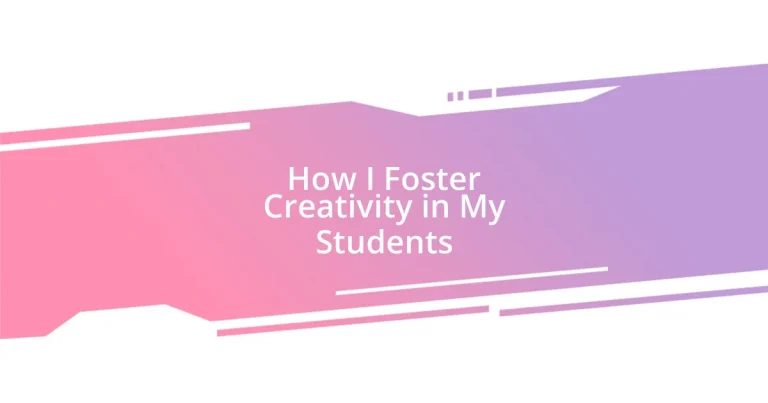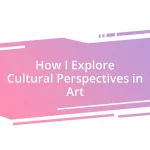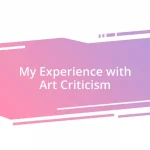Key takeaways:
- Fostering creativity requires creating a safe learning environment where students feel comfortable sharing their ideas without judgment.
- Encouraging open-ended questions and diverse teaching methods ignites students’ imagination and collaborative spirit, leading to innovative and engaging learning experiences.
- Reflective practices and peer assessments enhance the understanding of creativity, helping students recognize their growth and the collective nature of the creative process.
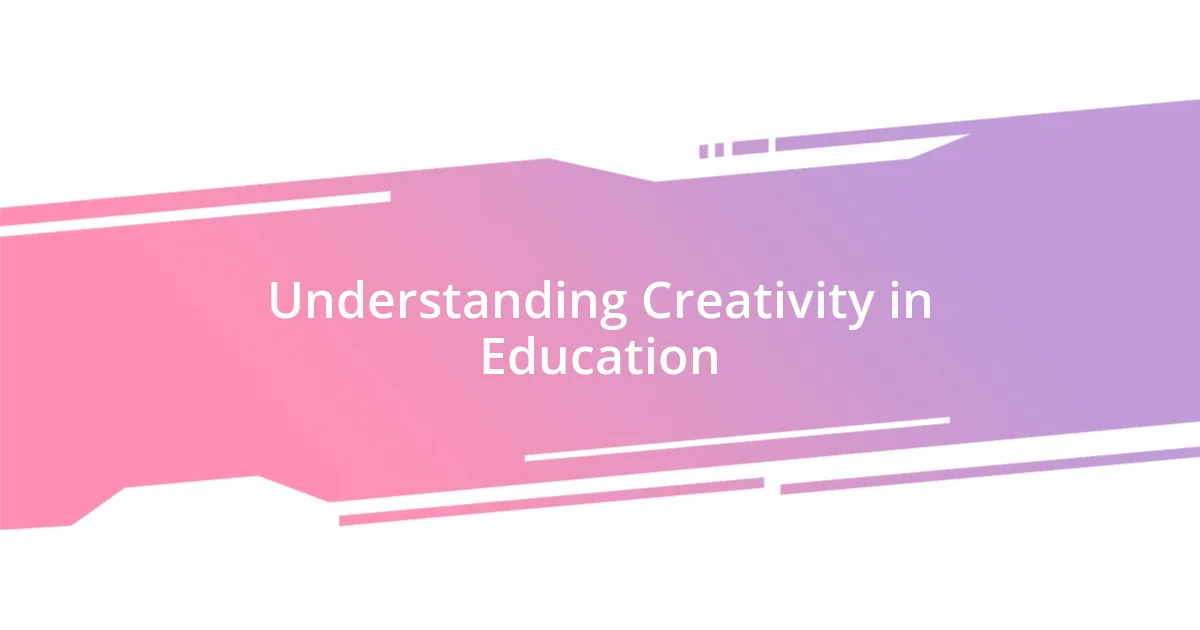
Understanding Creativity in Education
Creativity in education goes beyond simply encouraging artistic expression; it’s about fostering an environment where students feel safe to explore ideas without the fear of judgment. I remember a time when one of my students, typically quiet and reserved, designed an innovative project that merged science with storytelling. It was in that moment that I realized—how often do we truly allow our students to integrate their passions into their learning?
I’ve found that creativity often thrives in spaces that value curiosity over conformity. When I allow students to ask “what if?” and “why not?”, I can almost see the spark of inspiration ignite! For instance, I once implemented a project where students had to solve a real-world problem of their choice; the results were remarkable, from eco-friendly inventions to community initiatives. Isn’t it fascinating how providing freedom can lead to such diverse and inventive outcomes?
Understanding creativity in education also means recognizing its fluid nature. I’ve watched students’ creativity ebb and flow depending on their mood, environment, and even the topic at hand. This variability reminds me to be attentive and adaptable; to create moments that resonate emotionally. After all, if we can connect learning to their interests and feelings, don’t you think they’ll feel more invested in expressing themselves?
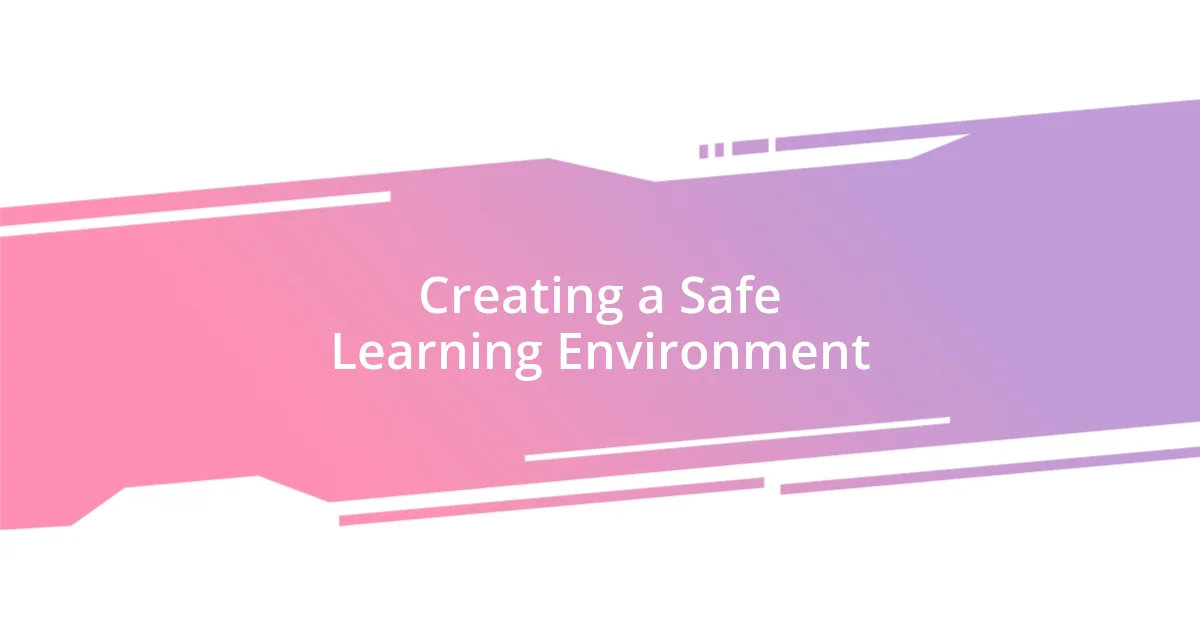
Creating a Safe Learning Environment
Creating a safe learning environment is crucial for fostering creativity. I remember a particular student who was often anxious about sharing ideas. One day, I introduced a “no wrong answers” policy during brainstorming sessions. Seeing her face light up when she shared her thoughts was a turning point for both of us. It felt like unlocking a door to a vibrant world of ideas, where she began to contribute more freely.
To nurture this safe space, I focus on a few key principles:
- Encourage open communication: I remind my students that all ideas are valid, no matter how unusual they may seem.
- Celebrate uniqueness: I often showcase individual talents and diverse perspectives, reinforcing that everyone’s contributions matter.
- Promote risk-taking: I share stories of my own missteps in creativity, showing that failure can be a stepping stone to success.
- Provide positive feedback: My approach emphasizes constructive criticism that focuses on growth, making students feel supported rather than judged.
- Create collaborative opportunities: Group activities that emphasize teamwork help build trust among students, making them more willing to share and explore ideas together.
This approach not only helps students feel secure, but it encourages them to dive into their creativity with confidence.
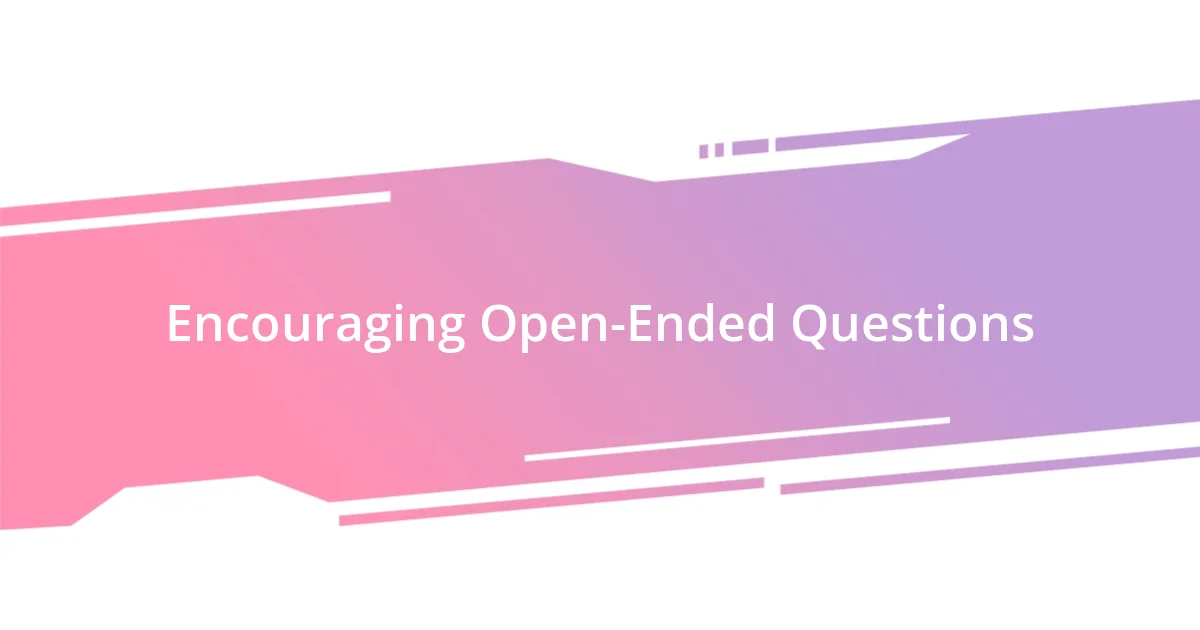
Encouraging Open-Ended Questions
Encouraging open-ended questions can truly amplify creativity in the classroom. I recall an instance when I asked my students to consider what makes a superhero. Instead of providing them with a specific answer, I urged them to think broadly. The responses were astounding! One student envisaged a superhero who could heal through kindness—a reflection of their empathy towards others. This moment revealed just how powerful open-ended questions can be. By inviting students to explore ideas without restrictions, I observed their imaginations spring to life.
What’s fascinating is how open-ended questions fuel the collaborative spirit among students. During a recent group project, I prompted the students with “How might we design a solution to reduce waste in our community?” This led not only to an array of thoughtful responses but also to heated discussions and exchanges of ideas. I loved watching their eyes light up; they were no longer just answering questions, but rather engaging in a dynamic dialogue. Isn’t it enlightening to see them challenge each other, ask deeper questions, and build off one another’s thoughts?
Additionally, I make it a point to model open-ended thinking in my own inquiries. By demonstrating curiosity through my questions, I foster an environment ripe for exploration. When I recently asked a student why they felt passionate about a particular book, their interpretation turned into a beautiful reflection on identity and belonging. In the end, these open-ended conversations lead not just to creative ideas, but to a deeper understanding of themselves and their peers. It’s remarkable how such inquiries create a sense of community and ignite a collective spark of creativity.
| Type of Question | Example |
|---|---|
| Open-Ended Question | What are some ways a waste-free community could look like? |
| Closed-Ended Question | Should we recycle more? |
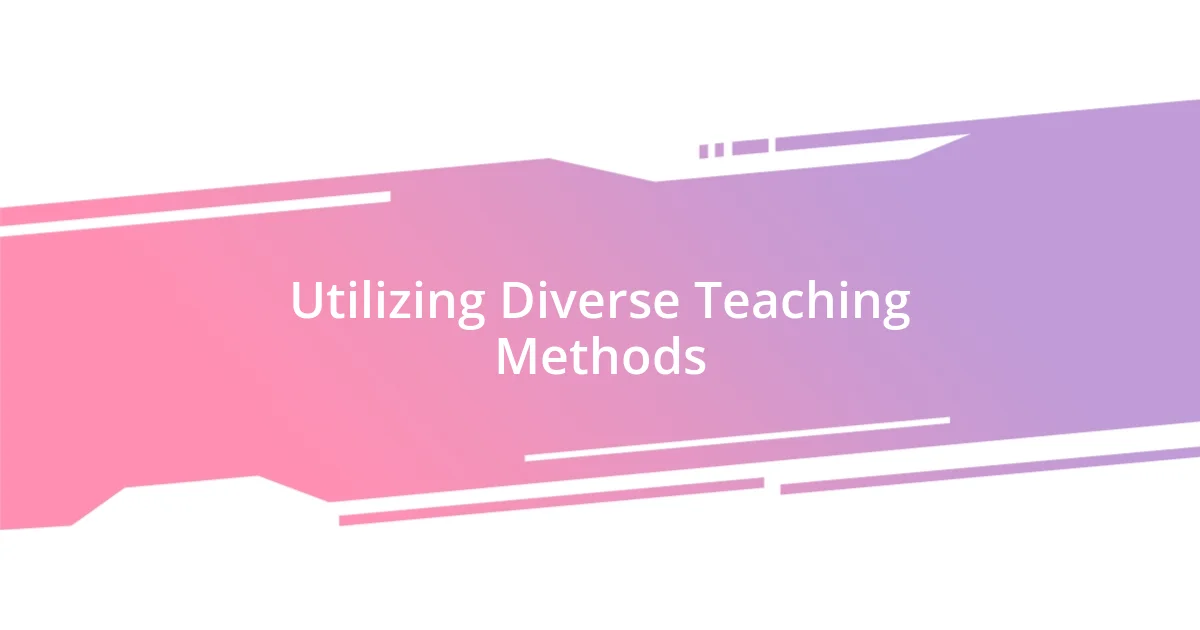
Utilizing Diverse Teaching Methods
Utilizing diverse teaching methods is a key strategy I adopt to spark creativity in my students. I often integrate visual, auditory, and kinesthetic learning styles into my lessons. For instance, during a history project, I had my students create visual timelines, write songs about important events, and even act out historical scenarios. Watching a typically quiet student transform into a lively storyteller during a skit was incredibly rewarding. It reminded me of the power of varied approaches—what works for one might just unlock the creativity in another.
Incorporating technology can also open new doors for creative expression. I once introduced a digital storytelling tool for a literature unit, allowing students to create their own animated interpretations of stories. The excitement in the room was palpable! Seeing their faces light up as they honed their narratives in a medium they loved made me realize that sometimes, all it takes is the right tool to let their imaginations soar. I can’t help but wonder—how many more stories could emerge if we let students choose the medium that resonates with them?
One of my favorite methods involves using real-world problems to inspire creative thinking. When we tackled environmental issues, I asked my students to come up with innovative solutions for our school’s recycling program. It was astonishing! Their ideas ranged from app development to community art projects that raised awareness. Witnessing their passion and determination to make an impact was inspiring. It reinforced my belief that when students connect their learning to the real world, their creativity begins to flourish. Isn’t it incredible how diverse teaching methods can unlock that potential?
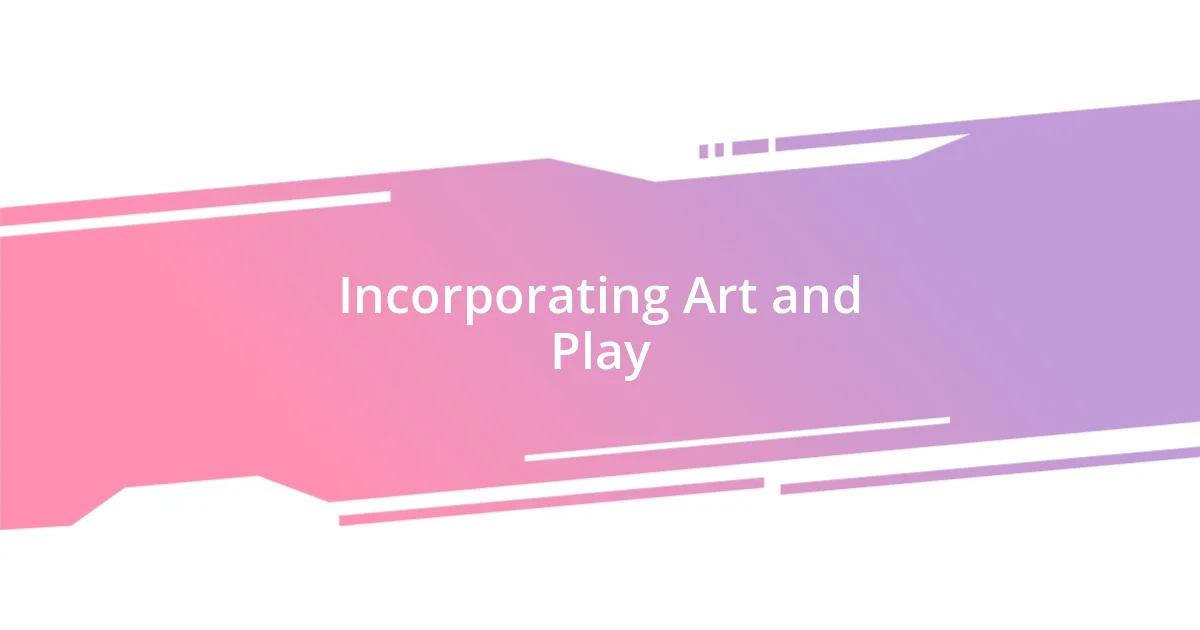
Incorporating Art and Play
In my experience, incorporating art into lessons truly enhances creativity. I often set up “art stations” where students can express their understanding through drawing, painting, or even sculpting. One time, while studying ecosystems, a student chose to create a diorama using clay, which not only deepened their grasp of the topic but also revealed their artistic flair. It was a wonderful reminder that art isn’t just about aesthetics—it’s a bridge to deeper comprehension.
Play, on the other hand, can transform learning into an adventure. I devised a role-playing game where students assumed the roles of historical figures, navigating through events and decisions that shaped our world. I clearly recall the laughter and excitement as they debated strategies and formed alliances. Witnessing them become so immersed in this playful environment sparked their creativity—proving that when learning feels like play, students are more willing to take risks and think outside the box.
Another approach I’ve embraced is integrating improvisation into classroom activities. One day, I asked students to spontaneously create short skits that showcased scientific principles. The energy was electric! They didn’t just learn; they became the molecules dancing in a chemical reaction, or the planets orbiting the sun. Engaging in this kind of playful exploration allowed their imaginations to flourish, and it emphasized how important it is to let go of rigid structures sometimes. Isn’t it fascinating how a little play can turn complex concepts into unforgettable experiences?
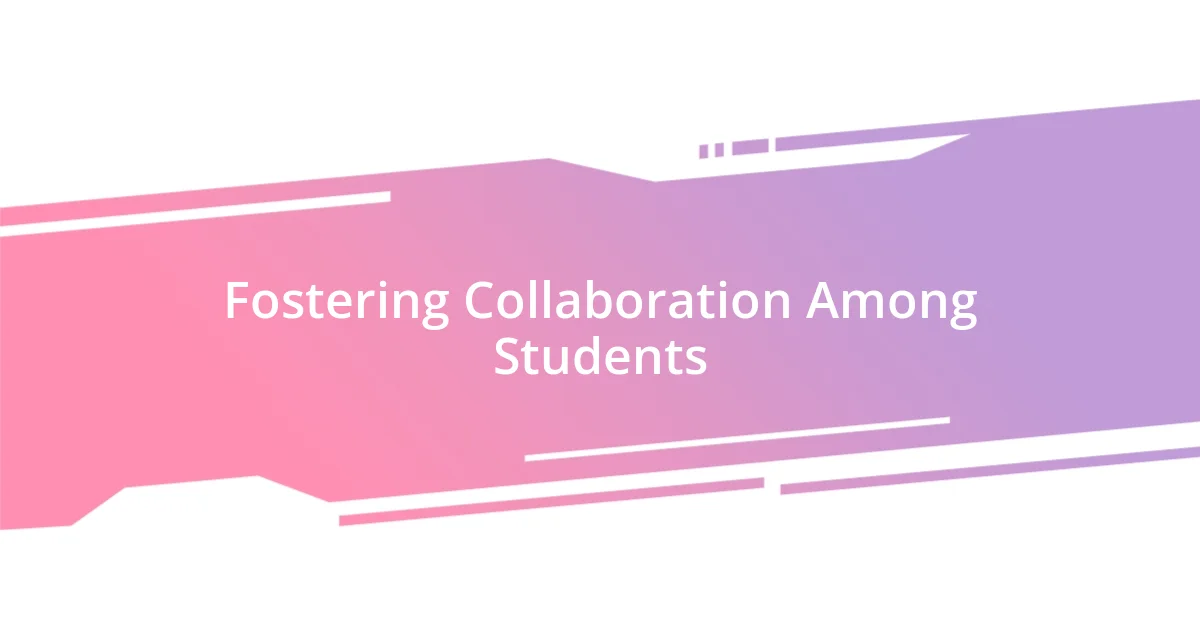
Fostering Collaboration Among Students
Encouraging students to work together on projects has been one of the most effective ways I’ve seen collaboration flourish in the classroom. I remember a specific instance when I grouped students to develop a presentation on renewable energy. Watching them bounce ideas off each other and compromise on their different perspectives was invigorating. Did you ever notice how a simple group discussion can ignite new visions that no one saw coming?
I also integrate collaboration through peer-led brainstorming sessions, where students are tasked with solving a class challenge together. Last month, I set up a challenge where they needed to design a product that would help reduce plastic waste. As they debated and evaluated each other’s ideas, it was inspiring to see them not only valuing one another’s contributions but also growing more confident in expressing their thoughts. It’s an empowering feeling, isn’t it, when students realize that their voices matter?
I have found that utilizing technology serves as a wonderful catalyst for collaboration. I introduced a shared online platform where students could work on a community service project. One evening, I received messages from my students, buzzing with ideas and strategies. The energy was contagious! It showed me the impact of using the right tools to foster dialogue. How rewarding it is to witness students collaborate seamlessly, even outside the classroom!
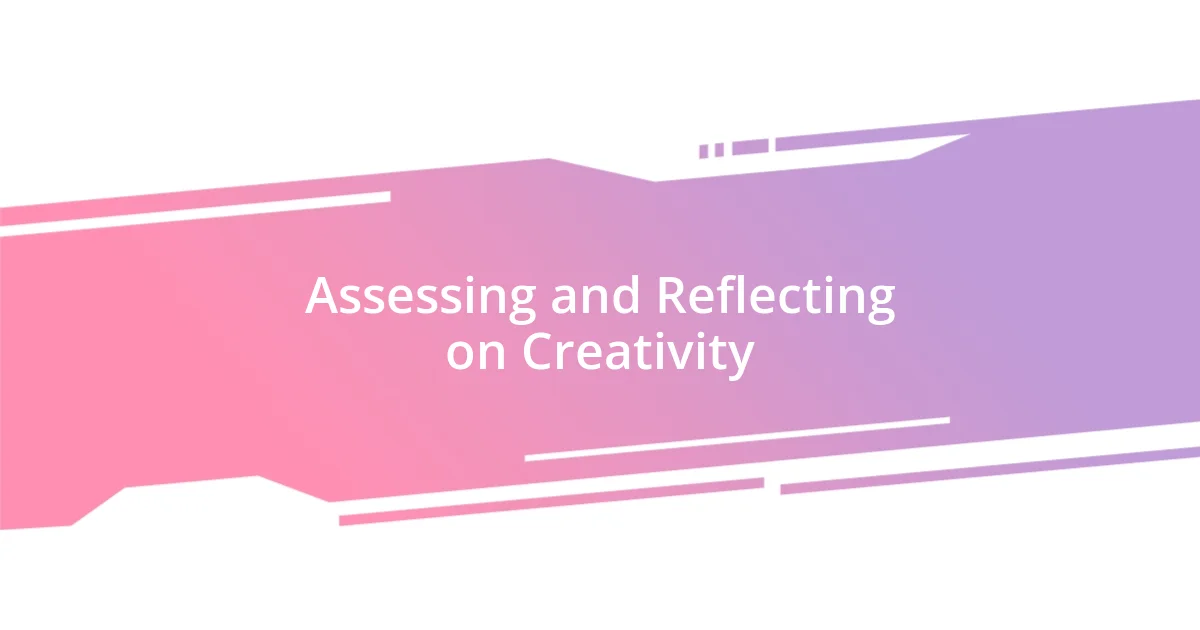
Assessing and Reflecting on Creativity
Assessing creativity can sometimes feel elusive, and I’ve learned it takes both structured methods and intuitive understanding. I often implement reflective journals where students document their creative processes and thoughts about their projects. This practice not only allows me to gauge their progress but also helps them recognize their own evolution as creators. Have you ever noticed how reflection can turn vague feelings into articulate insights?
One evening, I hosted an ‘Art and Ideas’ night, where students presented their creative works alongside their thought journeys. I was struck by how sharing their experiences fostered a supportive environment for feedback. This peer assessment created a sense of community and allowed students to view creativity as a shared journey rather than a solitary venture. It often made me wonder—how much richer could our learning experiences be if we openly embraced collaboration in our assessments?
I’ve also found that using rubrics focusing on creativity, originality, and effort encourages students to push their boundaries. For instance, while evaluating a storytelling project, I included criteria for emotional engagement and unique perspectives. This not only challenged them but also led to some surprising and heartfelt narratives. Reflecting on their work through specific criteria sparks an important question: how often do we give ourselves the freedom to explore beyond the expected?












